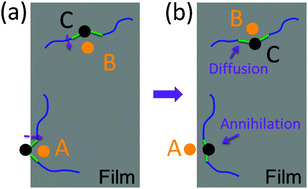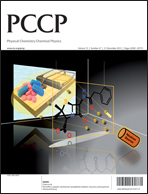Molecular simulation of structural relaxation in ultrathin polymer films
Abstract
Structural relaxation and physical aging in glassy polymer films have attracted much attention in the past two decades due to their strong correlation with the lifetime of polymer-based nano-devices. Currently, the observed physical aging in polymer films was explained on the basis of a free volume diffusion model (FVDM) that has not yet been validated by simulations at the molecular level. Here we performed a Monte Carlo simulation by introducing the vacancy diffusion mechanism (similar to FVDM) to investigate the structural relaxation in ultrathin polymer films. The results show that the local average density of segments increases linearly with the logarithm of time, similar to the fluorescence intensity and dielectric strength measurements in experiments. The responses of relaxation rates in ultrathin films to temperatures are consistent with that for glassy polymer thin films in experiments. The emergence of a peak of relaxation rates with decreasing temperature can be attributed to the competition of two mechanisms (segment mobility and accurate initial vacancy concentration) from the molecular levels. Our results demonstrate that the simulations with a vacancy diffusion model could indeed provide new insights from the molecular levels to understand the structural relaxation and physical aging in ultrathin polymer films.


 Please wait while we load your content...
Please wait while we load your content...